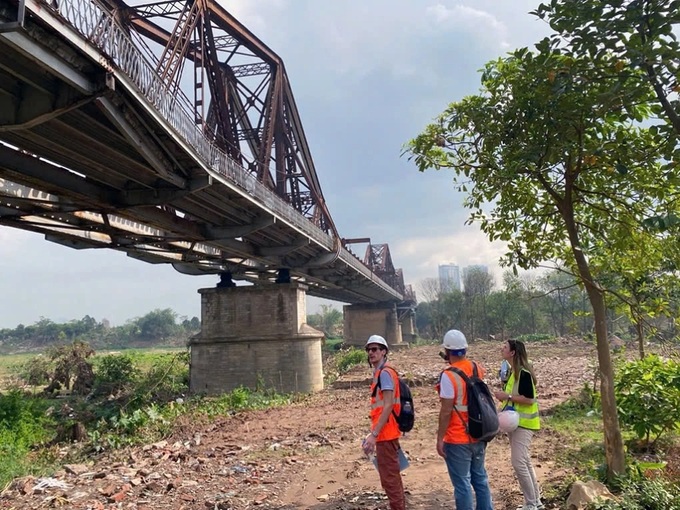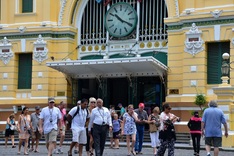Experts from Artelia, a French design company specializing in engineering, project management, and consulting services, have arrived in Vietnam to work with stakeholders and conduct a preliminary survey of the 122-year-old Long Bien Bridge for a restoration project.

Experts from Artelia make a field trip to Hanoi to conduct a survey of the Long Bien Bridge. (Photo: Artelia Vietnam)
At the end of 2023, the French government decided to grant Hanoi a non-refundable aid of over EUR700,000 to conduct a feasibility study for the renovation of the Long Bien Bridge. Since mid-October, the project has officially commenced with initial preliminary surveys.
Works on the bridge, the iconic French construction in the heart of Hanoi, began in 1899 and when completed in 1903 it was named after Paul Doumer, the French Governor General of Indochina.
After more than 120 years in use, the bridge has deteriorated, with many components in need of replacement. The degradation over time has affected and restricted the flow of vehicles across the bridge, and impacted the urban landscape of the surrounding area.
It now retains only 9 spans on the Hanoi side and 3.5 spans on the Gia Lam side in their original form. The other spans have all been replaced.
In mid-October, the first group of French experts, in collaboration with consulting units and stakeholders from the Hanoi Department of Transport, conducted preliminary evaluation surveys.
“After coordinating with the French experts and relevant units, we have just submitted the project to the municipal Department of Planning and Investment, and the municipal People’s Committee for consideration and approval,” said Phan Truong Thanh, head of the Financial Planning Division at the Hanoi Department of Transport.
According to the official, the technical assistance project funded by France will be divided into three components. In the first phase, the stakeholders will conduct a detailed overall survey of the structure and collect data to ensure traffic safety in the short term.
In the second phase, they will assess the structural integrity of the bridge to propose appropriate renovation methods and solutions. They will then study
the potential uses of the bridge in the future, particularly in the context of establishing a new railway network for the current North-South railway line.
The survey work is scheduled to take place over three months, and the entire project is expected to be completed by September 2025.
In addition to ensuring traffic safety, the preservation of cultural and historical values of the bridge has been particularly emphasized by the Hanoi Department of Transport, said Thanh.




















